In today’s waste conscious world fashion houses have been identified as massive sources of textile waste. So what better way to recycle those tactile and colourful fabrics than to incorporate them into textile art?.
Nigerian artist Marcellina Akpojotor has not only achieved that, using scraps of fabric sourced from Lagos fashion houses but has created internationally acclaimed, award-winning designs using intricate and colourful collage and painting techniques. Her richly textured and layered work makes for compelling visual imagery.
The large scale mixed media portraits she creates incorporate Ankara fabric – commonly known as African print fabric – and ceremonial clothing called “aso-ebi”. Marcellina chooses Ankara fabric for its cultural significance and its role within the history of her country.
Marcellina’s work explores femininity, personal and societal identity, and issues surrounding women’s empowerment in contemporary society. Her images depict the unyielding strength, complexities and yet effortless style of her subjects, and the long and arduous journey to female empowerment and gender equality undertaken by African societies.
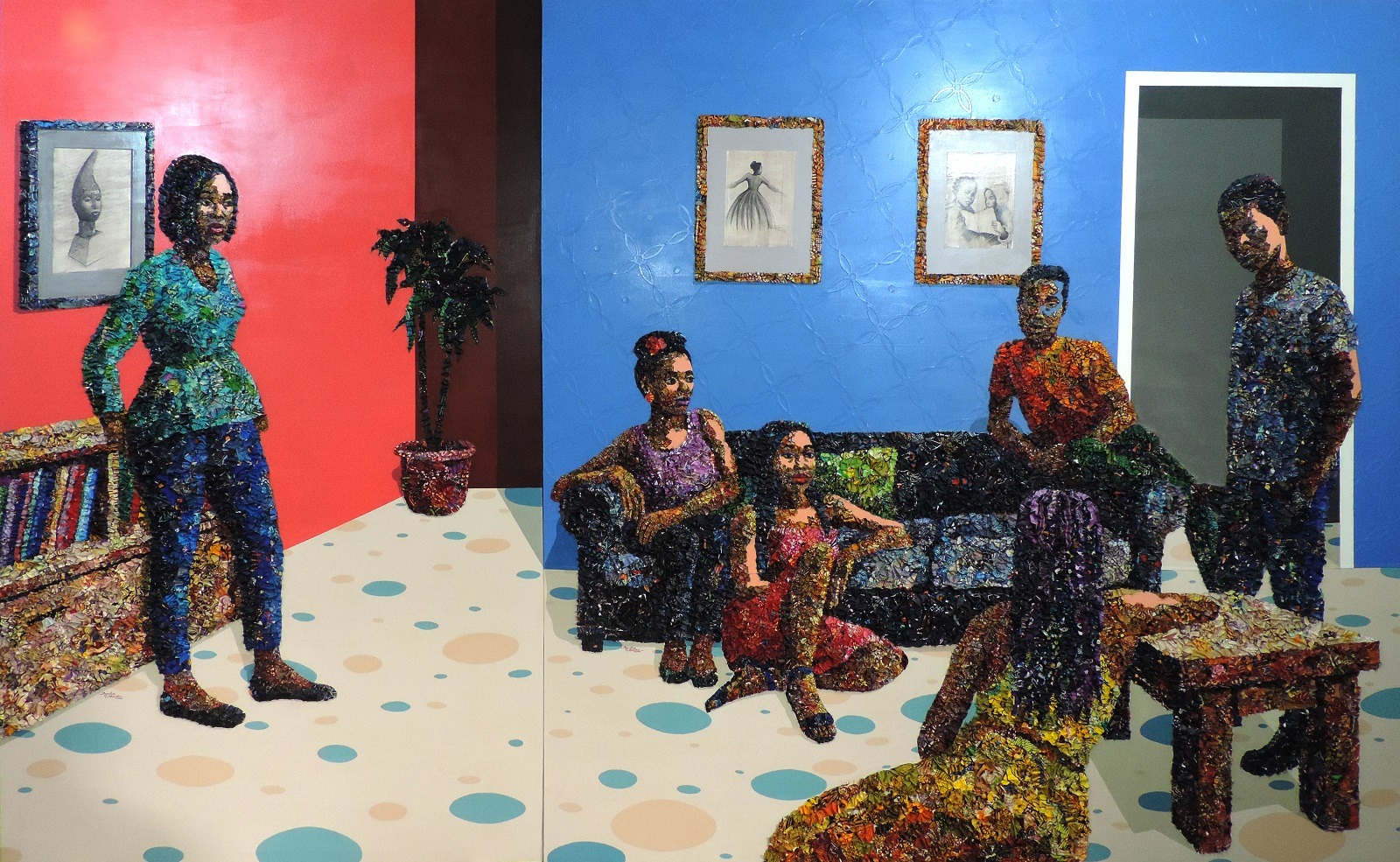
Colourful African prints
TextileArtist.org: What initially attracted you to textiles as a medium? How was your imagination captured?
Marcellina Akpojotor: When I first started creating, I used some of my mother’s clothes to make jewelry and I sketched portraits with chalk pastel.
As I began to experiment with different mediums, I came across textiles which were readily available to me and so I started to use them to explore my new ideas; I eventually progressed to using them in my paintings.
I am particularly attracted to African prints because of the stories they tell: in Nigeria they are used as ‘aso-ebi’ – textiles worn by friends and families to celebrate people and events. The fabrics are colorful, vibrant and filled with a variety of motifs. I also felt people could relate to my use of textiles because these fabrics are part of everyday life in Nigeria.
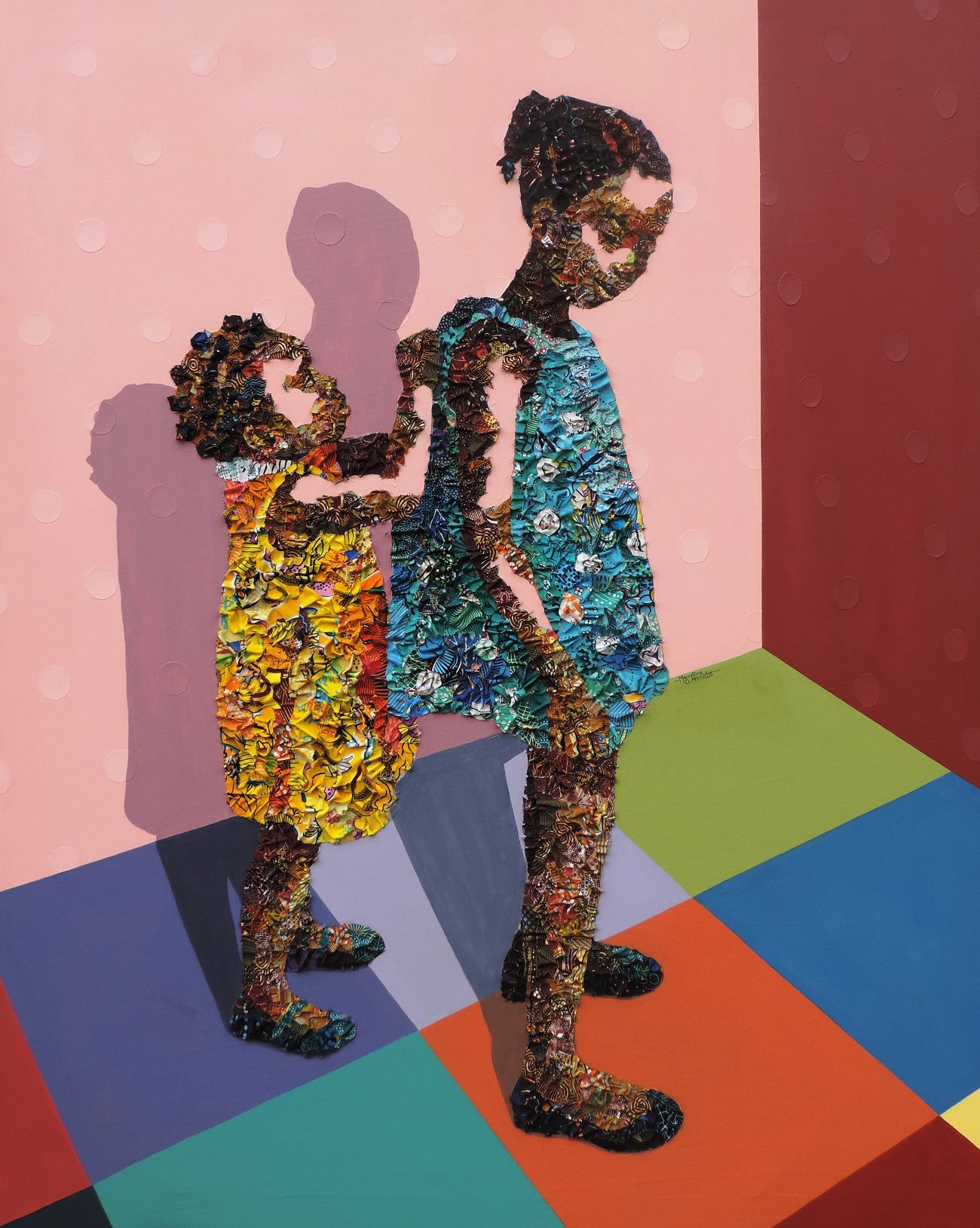
What or who were your early influences and how has your life/upbringing influenced your work?
I grew up assisting my father, who was an artist and sign writer, from an early age. Whilst working alongside him I learnt different skills including calligraphy, painting, stencilling and drawing and I use these as part of my artistic process now.
Early on I was influenced by artists Bruce Onobrakpeya and Peju Alatise. Seeing their works as a young art student was fundamental to my development and actually gave me the confidence to become a professional artist.
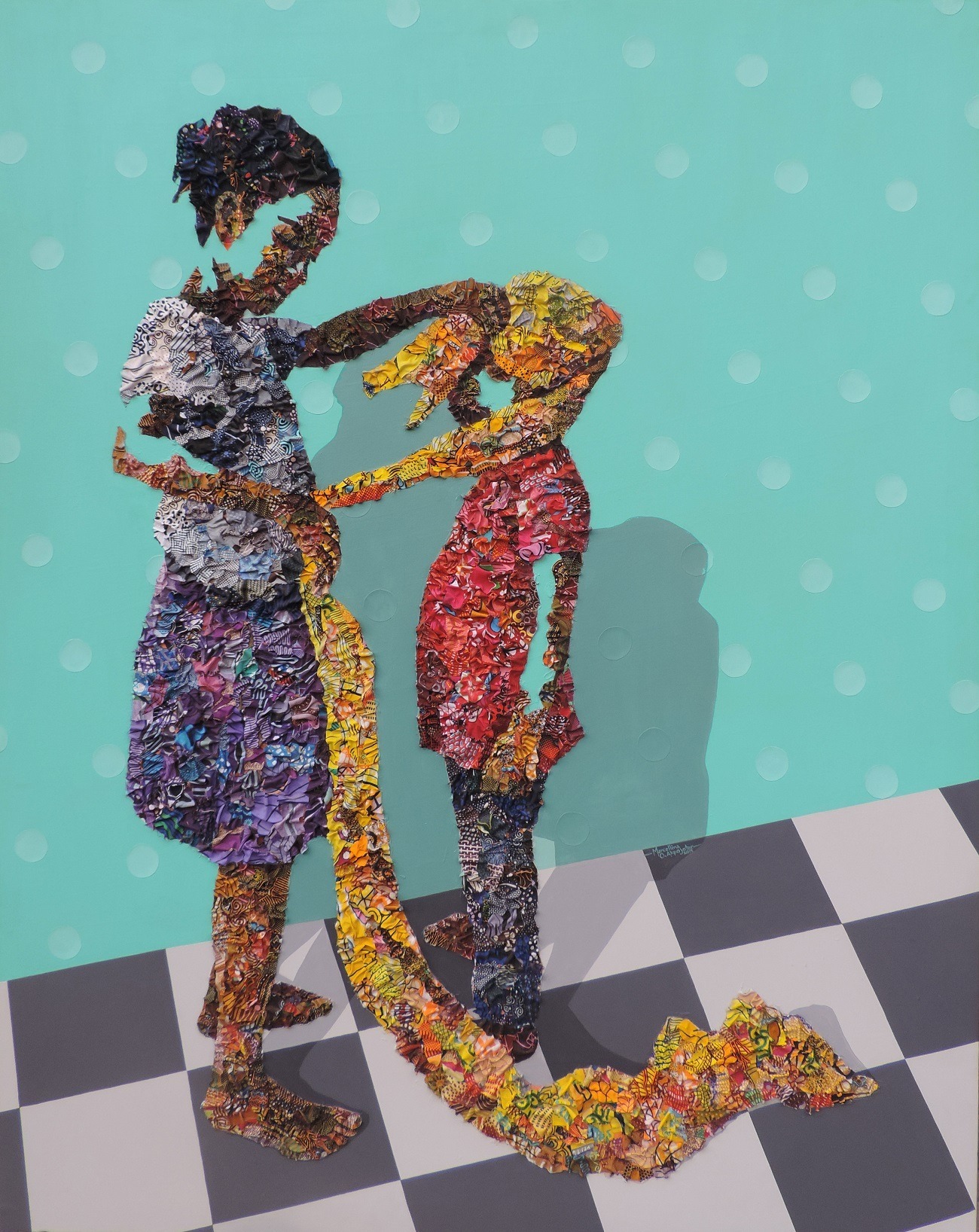
What was your route to becoming an artist?
It really began at age 6 or 7 whilst working with my father. I did some designing, made greeting cards and created a lot of sketches and paintings.
It is interesting because I didn’t think about having a career as an artist. I thought it was better to pursue other disciplines and do art and other creative things in my leisure time.
At school, I studied the sciences hoping it would prepare me for a career in related fields, but after my secondary school education I had an awakening: it was going to be art or art! I am so happy I had that moment – it led me to study Art and Industrial Design at Lagos State Polytechnic. I actually won an art competition there in 2013 and then proceeded to attend Obafemi Awolowo University for a Bachelors Degree in painting.
I’m lucky I met people who supported my dream. I was fortunate to do an internship at the studio of the legend Bruce Onobrakpeya where I had the opportunity to attend the Harmattan workshop and meet other artists.
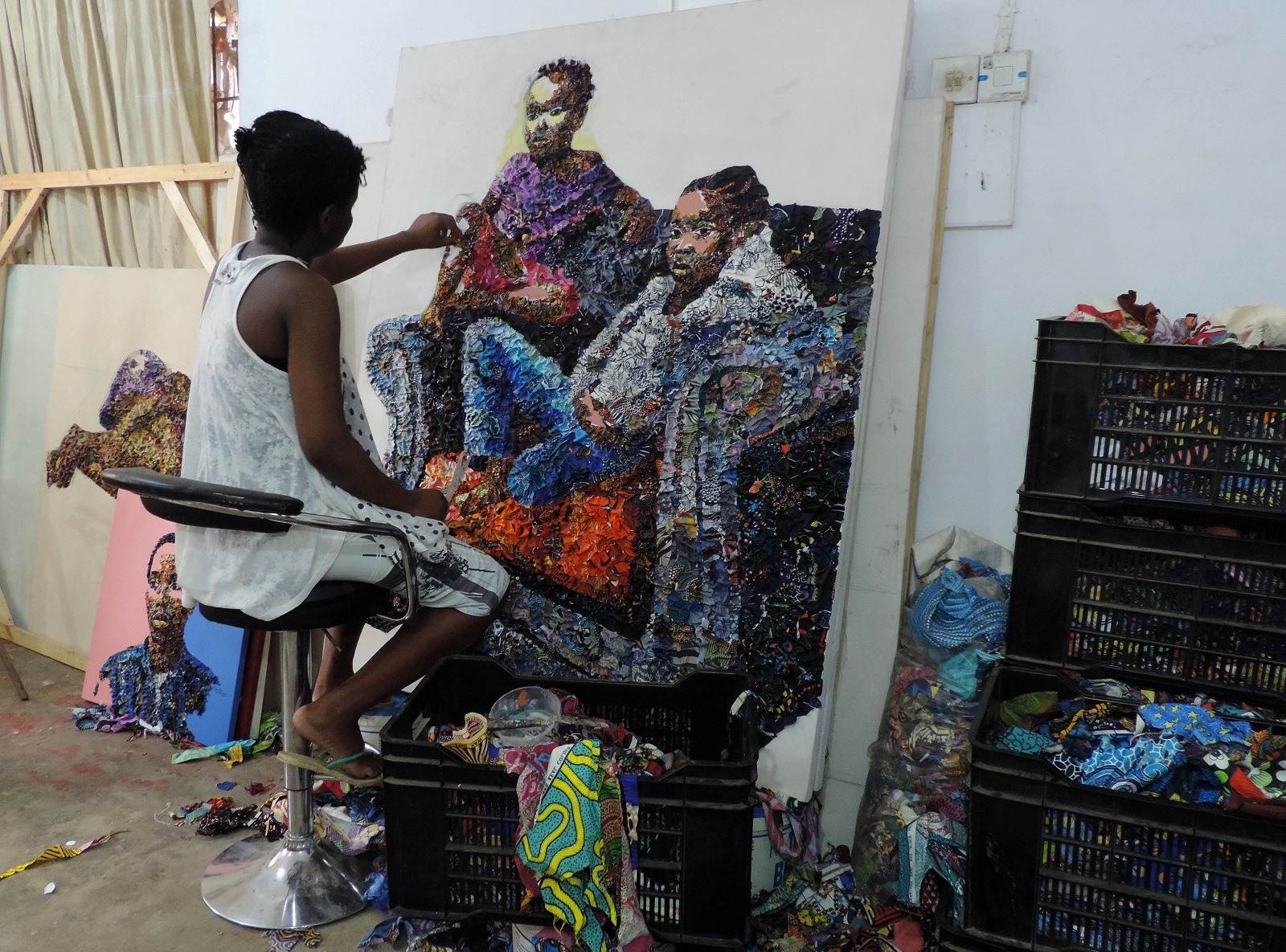
Collaged story swatches
Tell us about your process from conception to creation
It all starts from the mind with a story or an idea I want to tell, which then informs my composition.
I research and make studies before settling on an idea. I then sketch the idea onto the canvas and I begin to layer the fabric, deliberately creating textures; I liken this to the complexities of identity. I go over the canvas until the desired texture is achieved. I then paint using acrylic colours.
There is a lot of back and forth. From afar you see the form emerge, but as you move closer to the work, you see the play of light on the texture, patterns and colours.
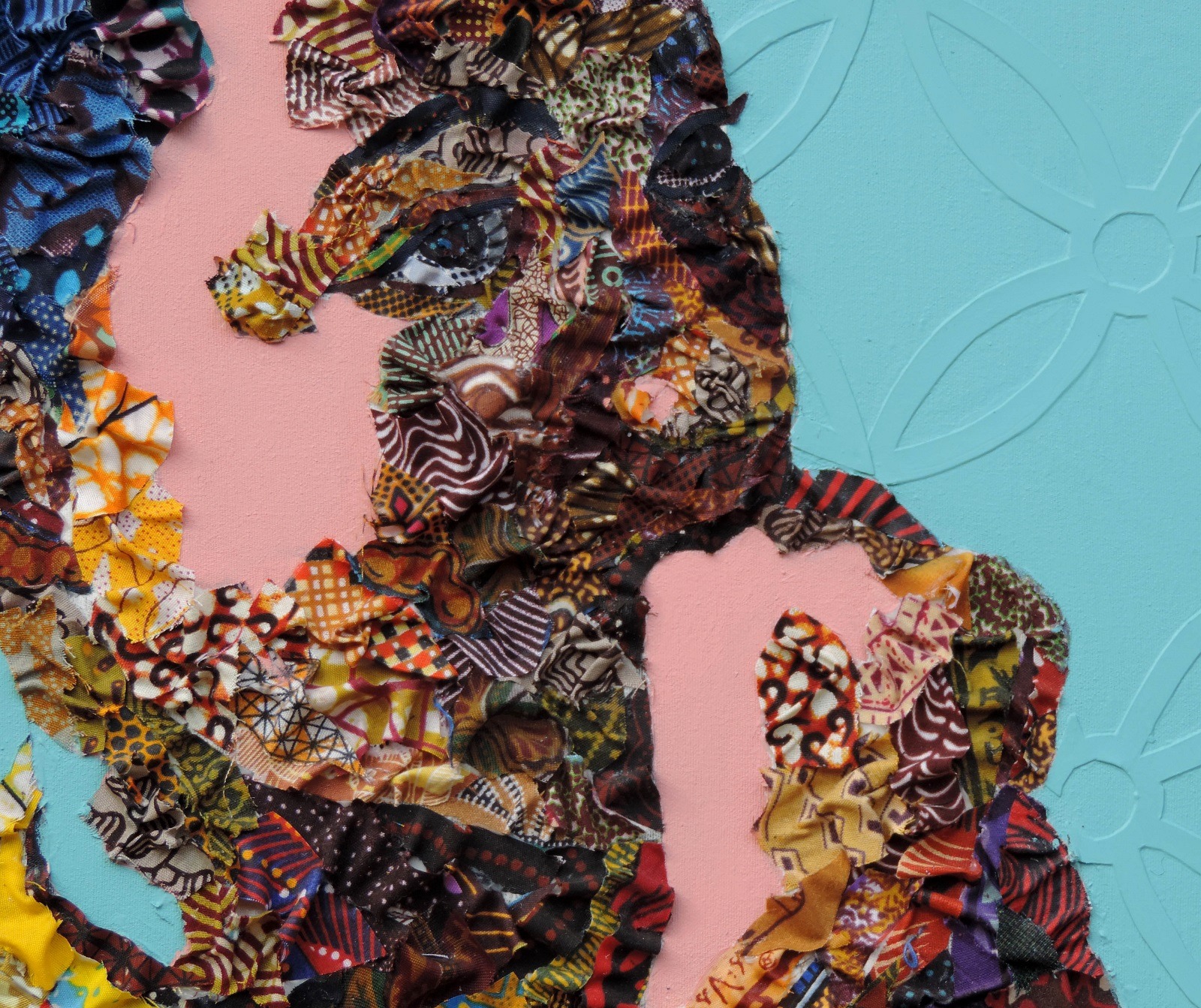
Tell us a bit about your chosen techniques and how you use them
My work consists primarily of collage and painting techniques. I am fortunate to be able to source the fabrics (and especially the Nigerian Ankara fabrics) from different tailors in my neighbourhood. These fabrics are cut-outs and leftovers from the clothes they have sown and would normally be burnt – or even thrown into the Lagos lagoon! The swatches of the fabrics are like the puzzle pieces that I use to create my stories.
Collage gives me the freedom to bring a lot of things together and to really explore textures and materials. The fabrics allow me to create the textures deliberately by attaching a piece at a time. In the process, there are high and low points with lots of intricacies.
When painting I love mixing and finding different colours and hues which kind of set the tempo for my work. Acrylic gives me this pleasure and immediacy. It’s fun finding my own colours and playing with its intensity.
These techniques compliment each other, as I use the natural colour from the fabrics in the collage.
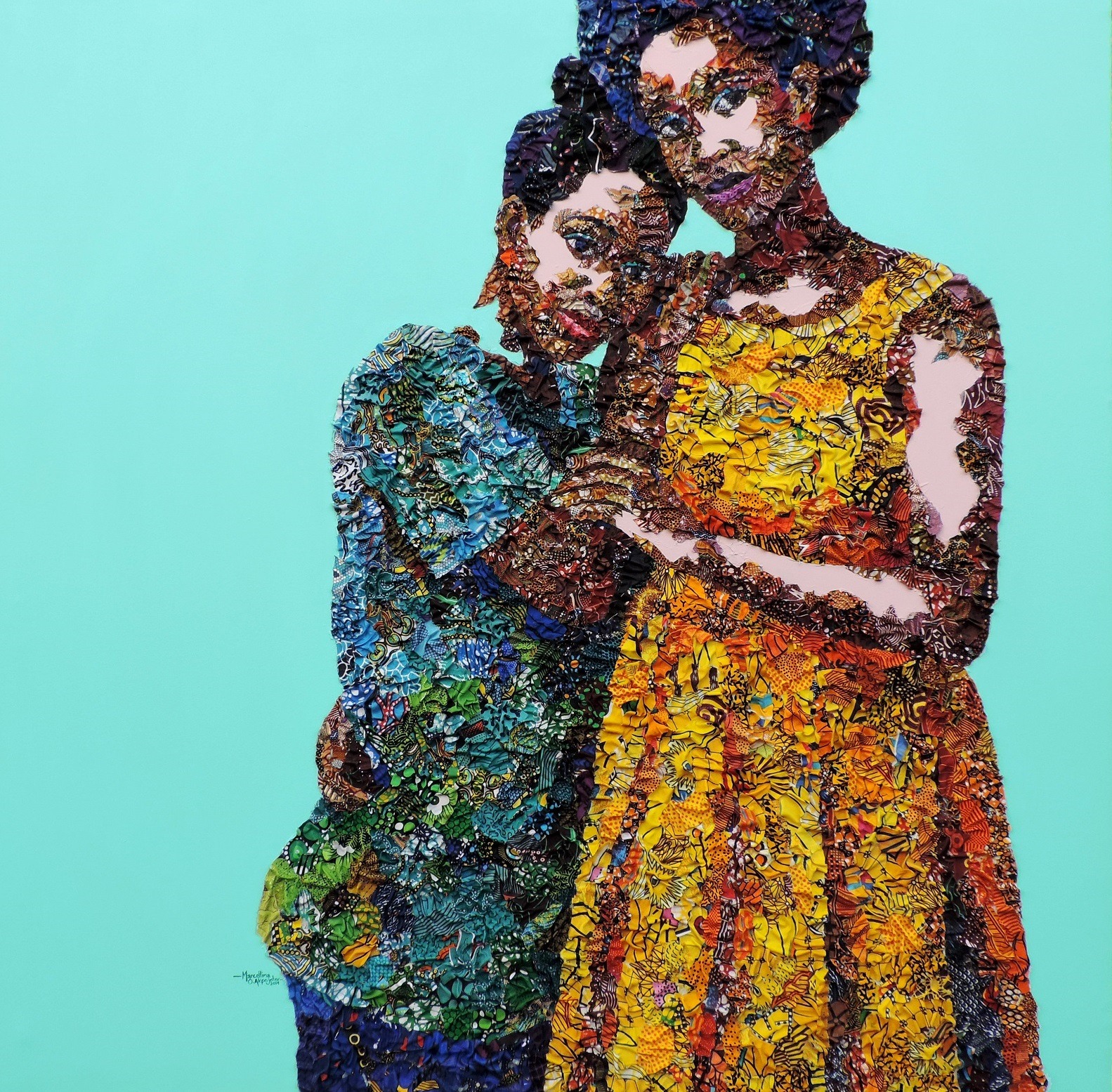
What currently inspires you?
I am inspired by everyday living and happenings that I see in our world. I’m also inspired by the women in my family and in society.
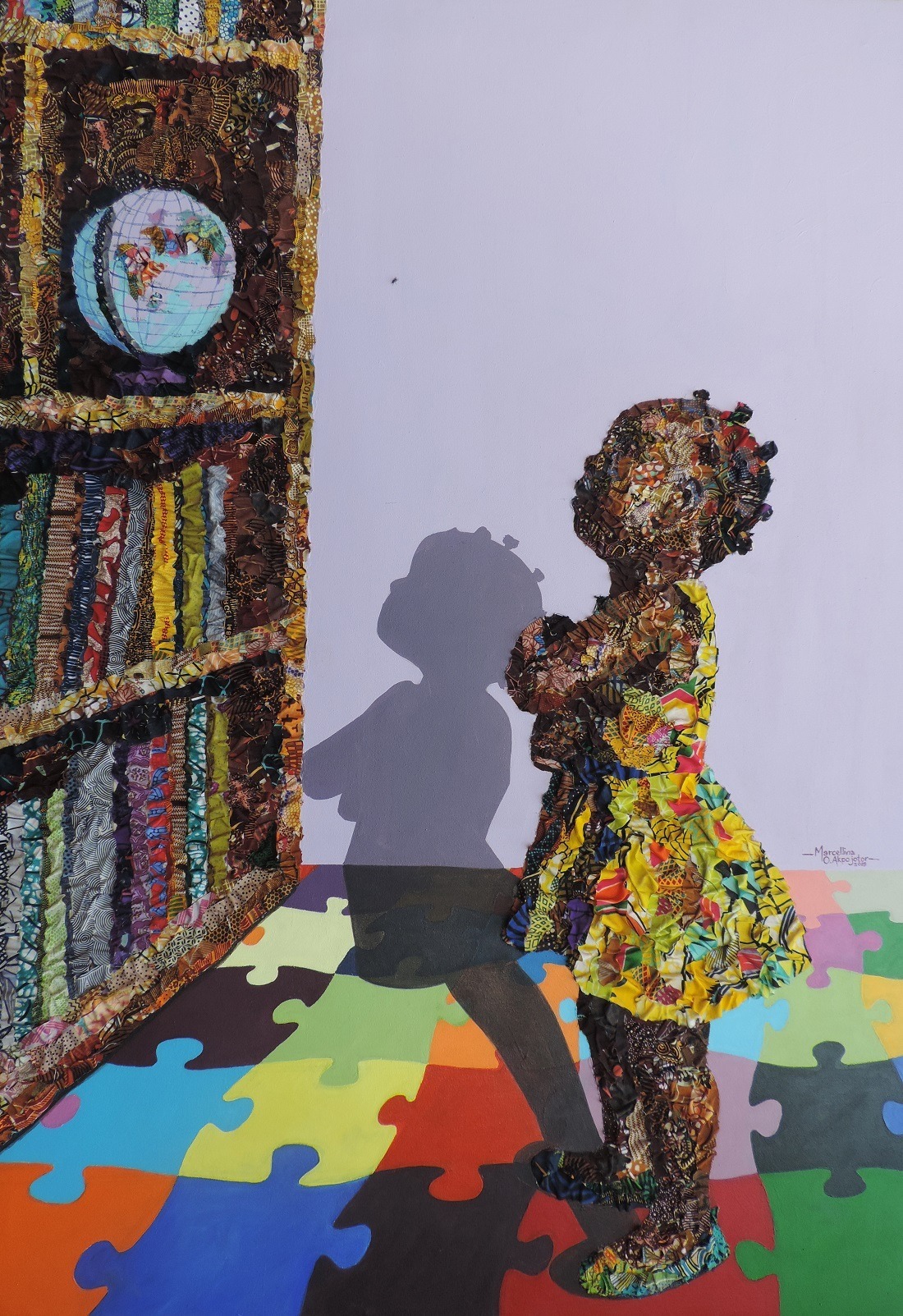
Raw emotion
Tell us about a piece of your work that holds particularly fond memories and why?
I have a body of work titled ‘Daughters Of Esan’ which is the story of women in my family spanning five generations – starting with my great grandmother and ending with my daughter – on the journey to the fulfillment of my great grandmother’s dream to receive an education.
The piece depicts my daughter in yellow gown standing on a puzzle-themed carpet and gazing at a globe which I used to represent travel around the world. The puzzle carpet design was the one she had at her daycare center as a toddler. The bookshelf represents the knowledge and education which my great grandmother wished she had received.
This work represents my dream that, one day, all children will have access to quality education and that the world will be a safe place that encourages growth and upholds their rights.
I was having a conversation with a collector and he was talking about that work. The emotion was raw and I realized that our stories are not ordinary at all; there are always people who will connect to them, and it is that which makes our stories extra-ordinary.
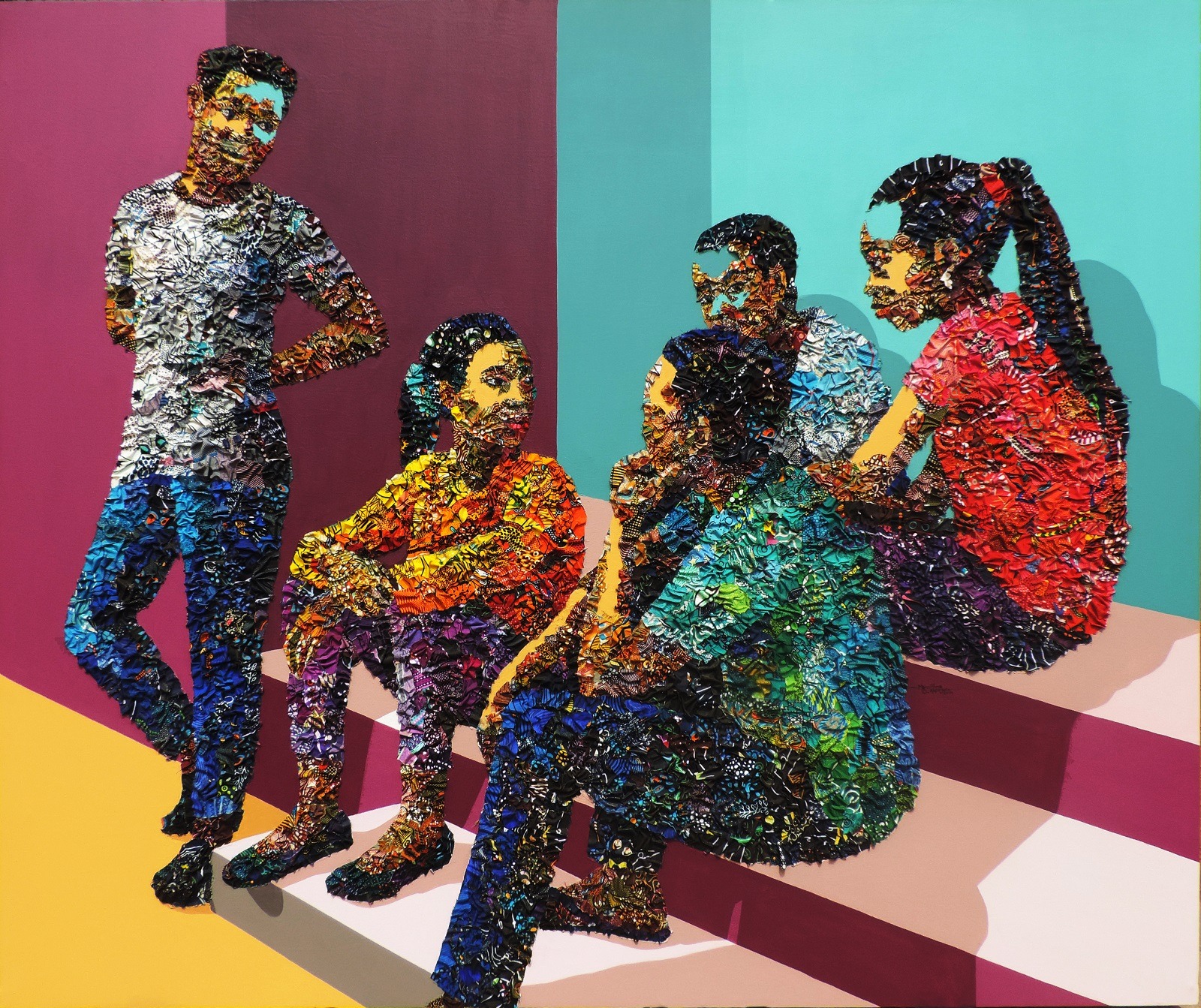
How has your work developed since you began and how do you see it evolving in the future?
I was making portraits of the women around me initially when I started. The first work I created using textiles included electronic waste and bottle tops and it won an art prize.
My works were originally, for the most part, faces, but with time I have evolved to create full figures and to incorporate more people into my work.
I have also added papers and drawings to my media. I hope to further my exploration into three-dimensional works, multimedia/performance art and to continue to tell engaging stories whilst creating more in-depth pieces.
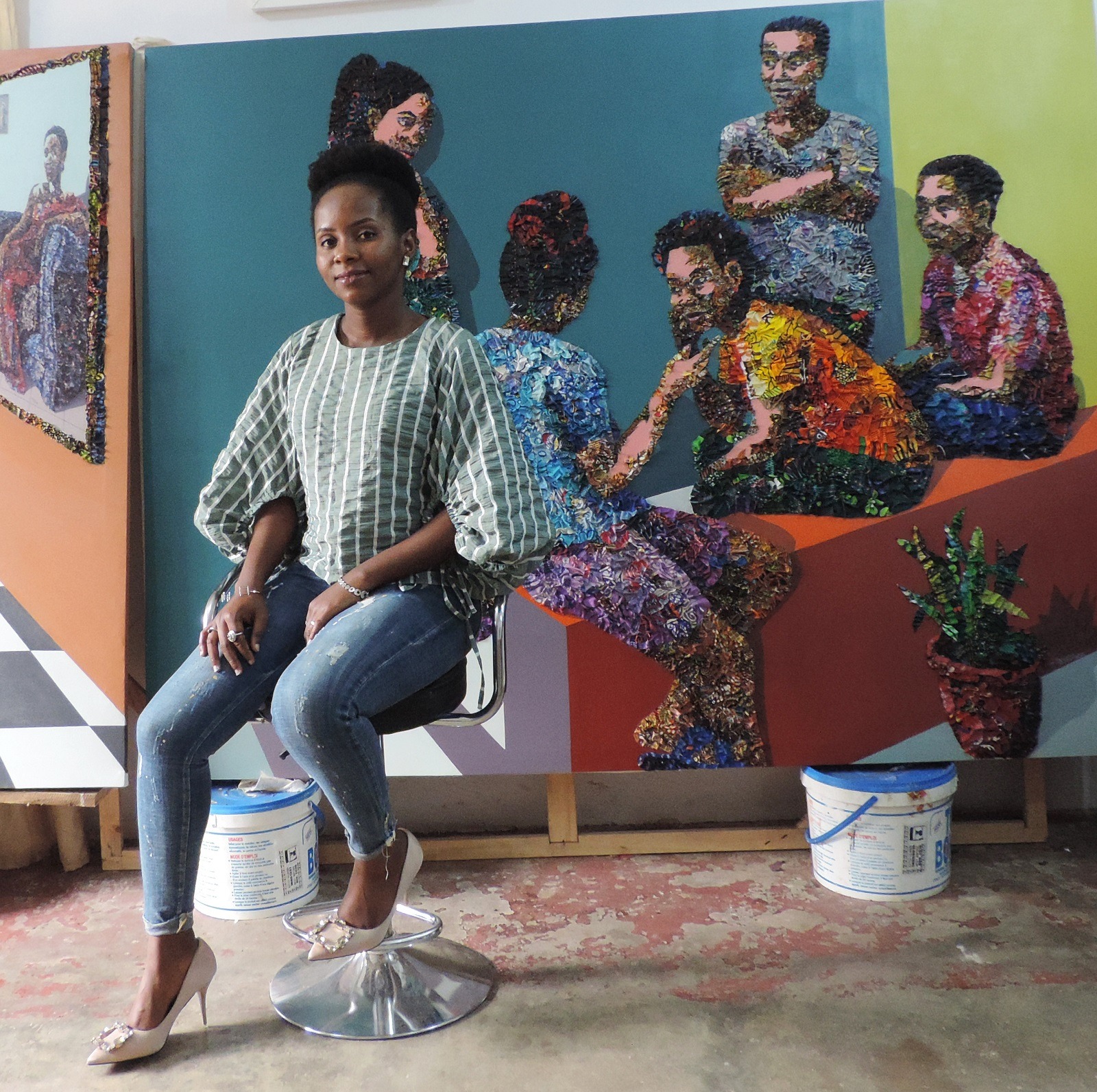
Key Takeways:
- If you’re waste conscious and want to use recycled textiles, go to your local tailors, fashion designers and clothing manufacturers. Better that their waste is in your textile art than in landfill!
- For inspiration, look around. What do you see in your everyday life, in your families and friends? What concepts and emotions do you see embodied there? Is there a message you want to convey through art?
- I chose paint and collaging techniques as my preferred media for my work, but I played with all sorts before finding what suited me. Free yourself to play around and find what works for you.
About the artist:
Marcellina Akpojotor has performed at the Bone Performance Art Festival in Switzerland and has taken part in group exhibitions in Ohio and Lagos, as well as having her own solo exhibition at the Rele Gallery in Lagos. She was the recipient of the 2017 Ronke Ekwensi Salon Fellowship.
Her work Tobi (2015) was used as the cover image for the novel Jagua Nana by Cyprian Ekwensi and she has been featured in the book ‘The Art of Nigerian Women’, as well as in Harper’s Bazaar, on BBC Nigeria and at the Goethe Institut.
For more information visit www.marcellinaakpojotor.com and on Instagram
We’d love to know which aspects of Marcellina’s work appealed to you most. Let us know in the comments below
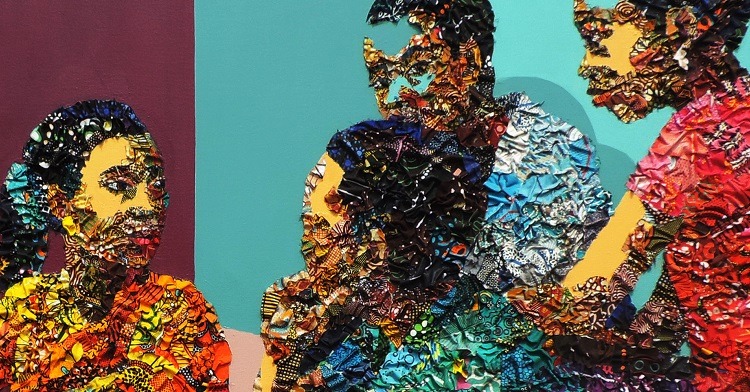
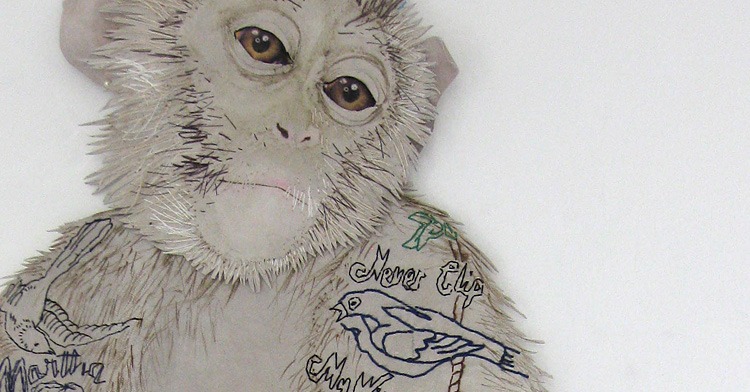
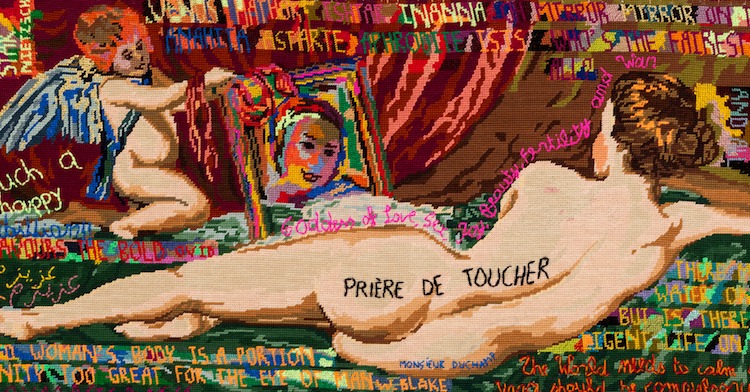
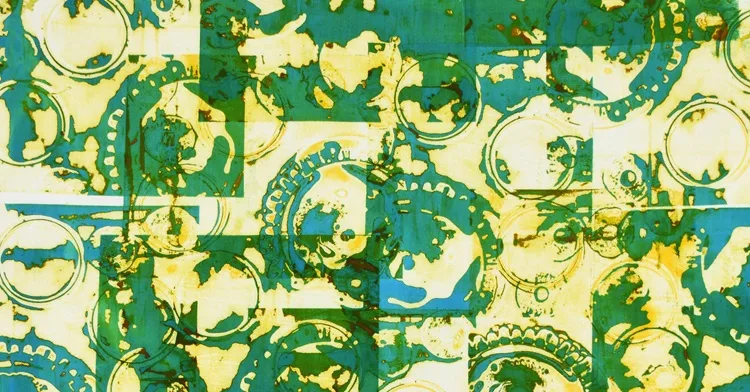
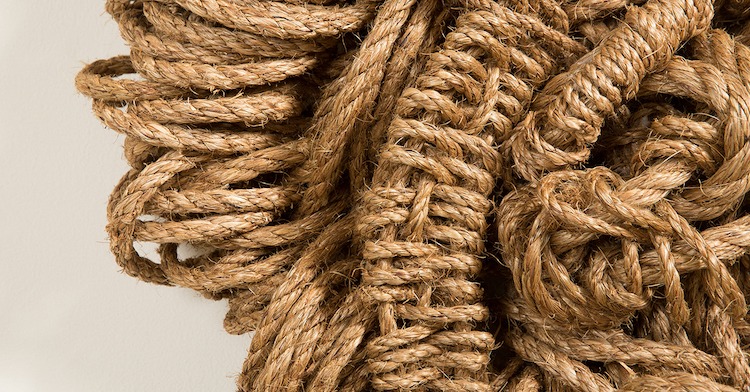
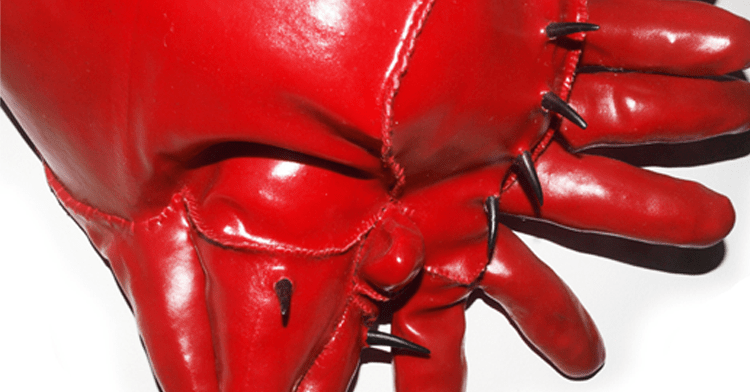
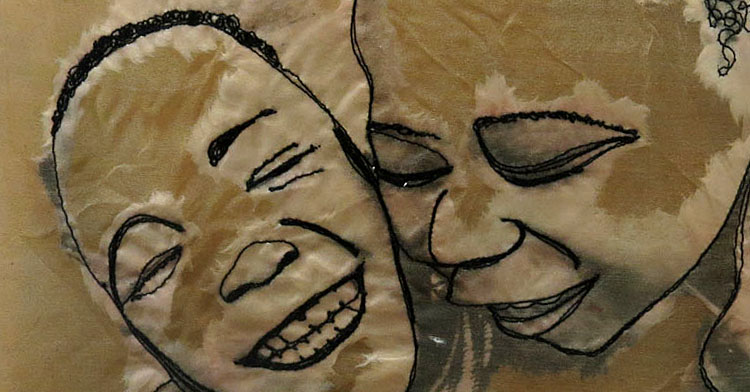
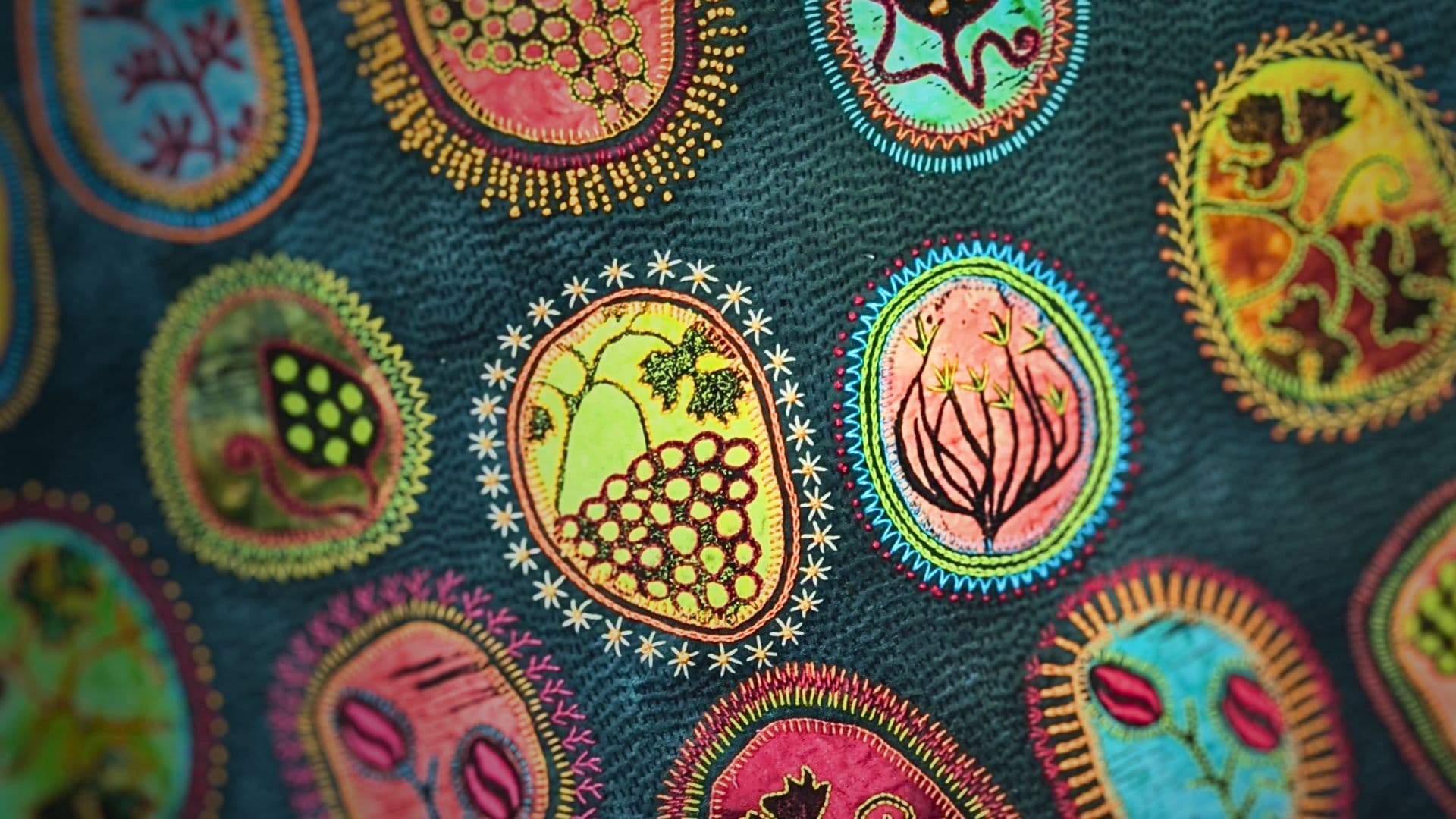
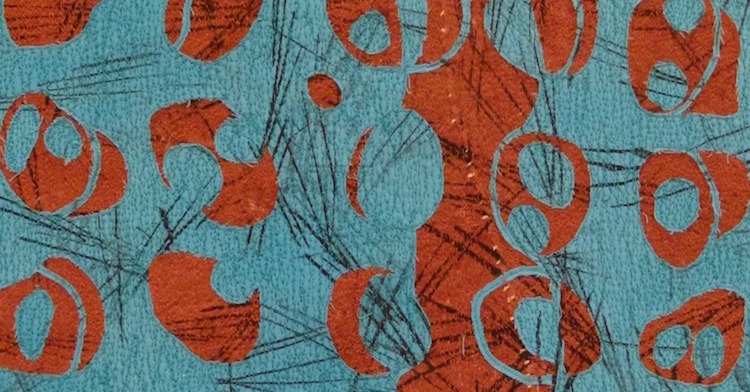
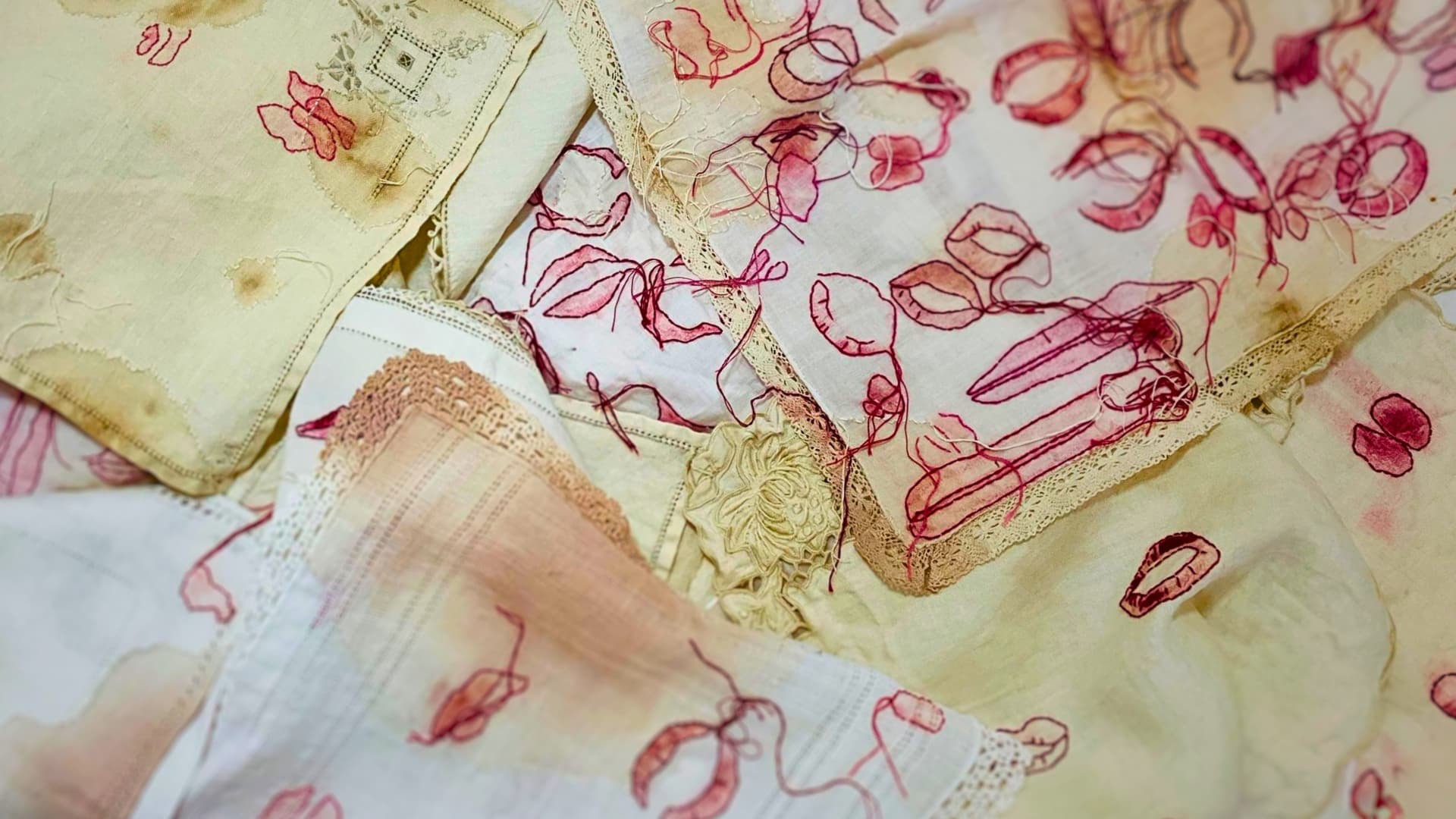
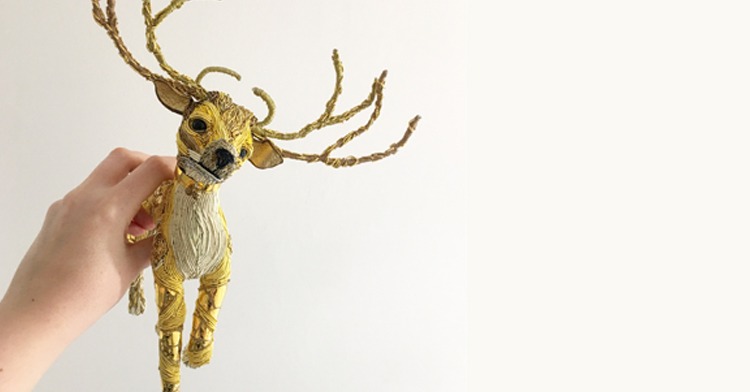
14 comments
Karin Dempsey Greenwood
Stunning !!! Beautifully executed. Well done.
Marie
ouah superbe… magnifique travail
Zainab ikram
Amazing ,lovely work
I really like it
Deanna Tyson
Brilliant! Bold, creative and a truly original use of collated mixed media on such an impressive scale! In many ways has the colour sense and feel of Lubaina Himid’s work.
Regina Dunn
These pieces really touched me, so beautiful and alive with stories and emotions.
Shelagh Gardiner
A truly amazing set of images, using techniques and materials which I wouldn’t have normally associated with achieving such naturalistic figures. The compositions, too, reveal an exceptional artistic / creative talent and levels of patience which, sadly, I can only dream of. The little girl in “Fifth Generation” is so expressive as she gazes up at the globe.
Inspirational.
June Boyle
Yes! I, too see character and emotion in the faces and body language. Such talent! I see comparatives in the work of American textile artist, Bisa Butler. She also uses African textiles for her figures. Both women give such life to their subjects.
Katharine Griffiths
There’s always something new to learn through textiles.org and seeing Marcellina’s work has really blown me away, her work is tremendous and inspiring, I also found it very moving.
Sheila Laurens
Wow. These pictures evoked such emotion in me. They are so powerful
Carolyn Bradburn
Absolutely beautiful!
Maggie Erwin
I love these, an immediate positive response. So talented.
Patrizia
Wonderful!!!
Margaret
The colours are so vibrant
Her work has reawakened my delight in “the confetti technique”.
Margot
Just amazing!